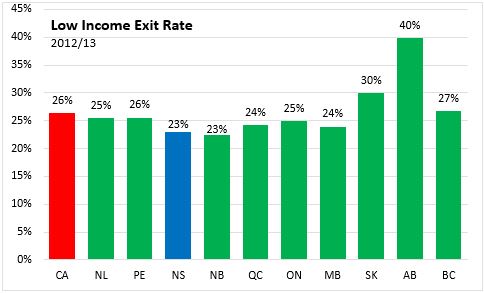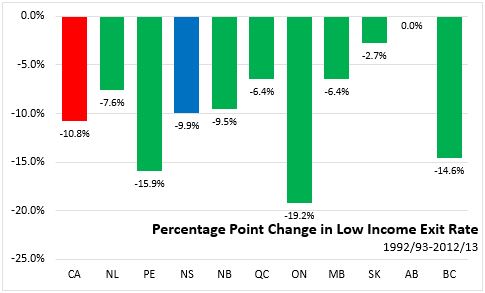For additional information relating to this article, please contact:
June 21, 2016LOW INCOME DYNAMICS OF CANADIAN TAXFILERS: 1992-2013 Of Nova Scotian taxfilers aged 18 and over who were in low income in 2012, the share that were not in low income 2013 (the “low income exit rate”) was 23 per cent, while the remaining 77 per cent remained in low income (the “low income persistence rate”). Of those not in low income in 2012, 4 per cent moved into low income in 2013 (“low income entry rate”) while 96 per cent remained out of low income (“low income resistance rate”).
Compared to other Canadian provinces, Nova Scotia had the second slowest low income exit rate from 2012 to 2013. New Brunswick's exit rate was slightly lower than Nova Scotia's. The Canadian average exit rate from low income was 26 per cent. The highest was Alberta, a clear outlier at 40 per cent.

Nova Scotia’s low income exit rate has generally declined over time. In 1992-1993, the low income exit rate was 33 per cent in Nova Scotia. By 2012-2013, this had declined to 23 per cent.

The low income exit rate has declined in every province except Alberta since 1992/1993. The largest declines were in Ontario, Prince Edward Island, and British Columbia, where the rates were the highest from 1992 to 1993. The declines were the smallest in Alberta, Saskatchewan, Quebec, and Manitoba.

Note that the data referenced above refers only to individuals age 18 and over who filed taxes in the same province for each of the two consecutive years. Individuals who moved across provincial borders or who did not file taxes in a given year are not included in the data for that time period.
Statistics Canada: CANSIM table 204-0101